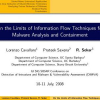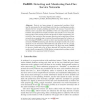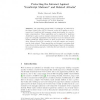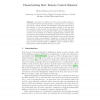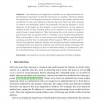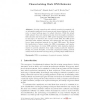DIMVA
2008
14 years 1 months ago
2008
Abstract. Stealthy malware, such as botnets and spyware, are hard to detect because their activities are subtle and do not disrupt the network, in contrast to DoS attacks and aggre...
DIMVA
2008
14 years 1 months ago
2008
DIMVA
2008
14 years 1 months ago
2008
Botnets are large groups of compromised machines (bots) used by miscreants for the most illegal activities (e.g., sending spam emails, denial-of-service attacks, phishing and other...
DIMVA
2007
14 years 1 months ago
2007
The networking functionality of JavaScript is restricted by the Same Origin Policy (SOP). However, as the SOP applies on a document level, JavaScript still possesses certain functi...
DIMVA
2007
14 years 1 months ago
2007
DIMVA
2007
14 years 1 months ago
2007
A botnet is a collection of bots, each generally running on a compromised system and responding to commands over a “commandand-control” overlay network. We investigate observab...
DIMVA
2007
14 years 1 months ago
2007
Scan detection and suppression methods are an important means for preventing the disclosure of network information to attackers. However, despite the importance of limiting the inf...
DIMVA
2007
14 years 1 months ago
2007
We collected DNS responses at the University of Auckland Internet gateway in an SQL database, and analyzed them to detect unusual behaviour. Our DNS response data have included typ...
DIMVA
2007
14 years 1 months ago
2007
Security researchers and network operators increasingly rely on information gathered from honeypots and sensors deployed on darknets, or unused address space, for attack detection....
DIMVA
2007
14 years 1 months ago
2007
By exploiting the object-oriented dynamic composability of modern document applications and formats, malcode hidden in otherwise inconspicuous documents can reach third-party appli...

